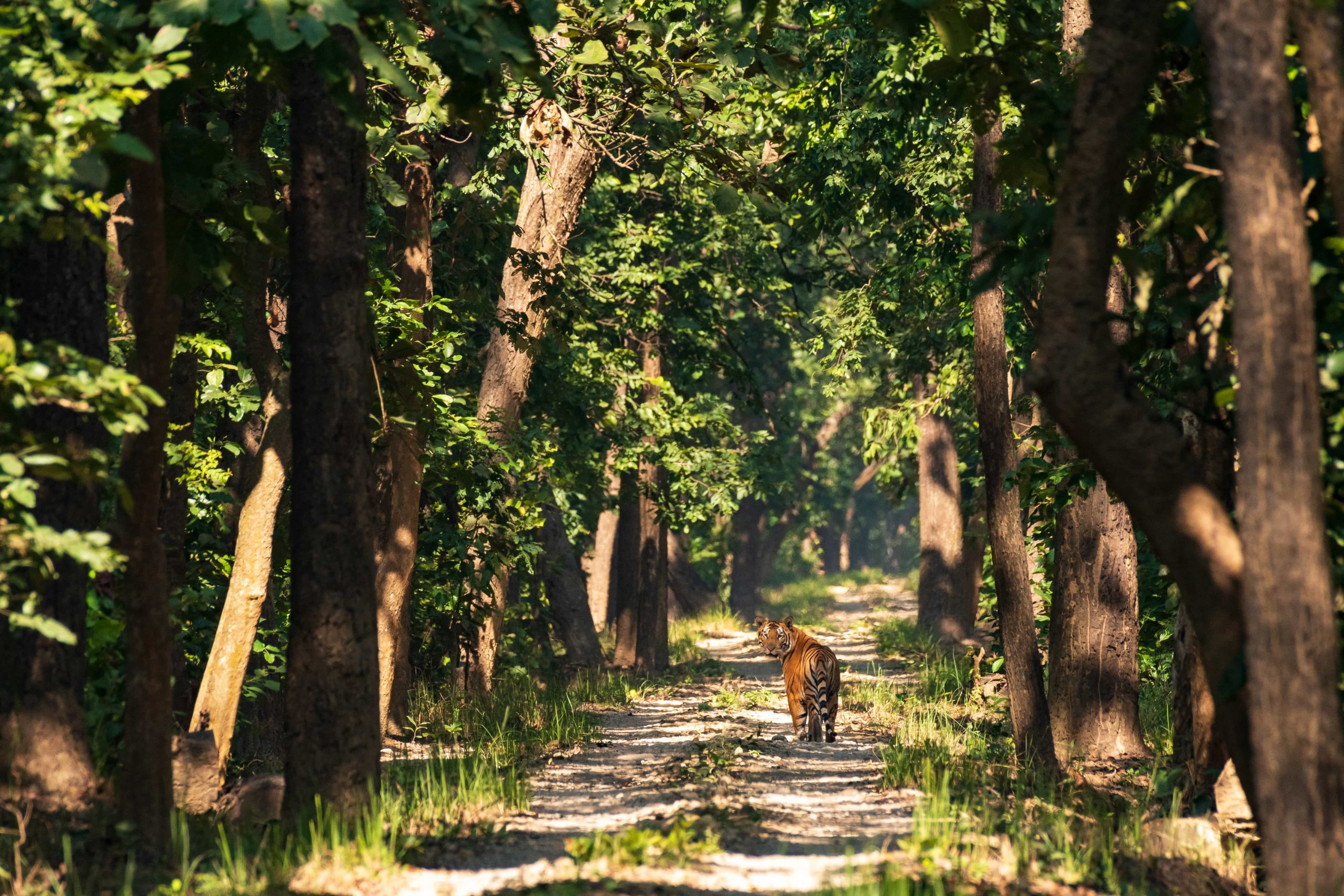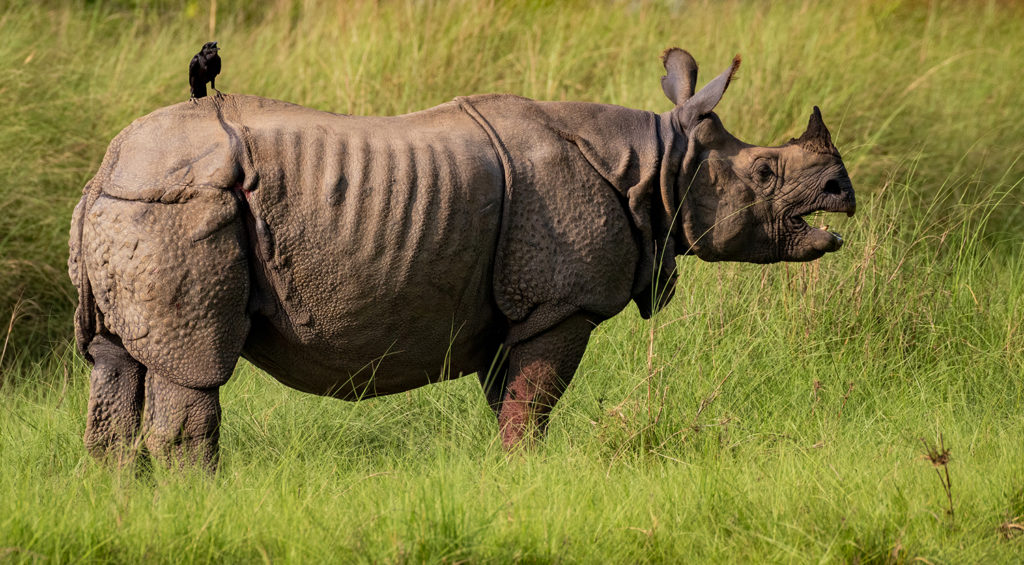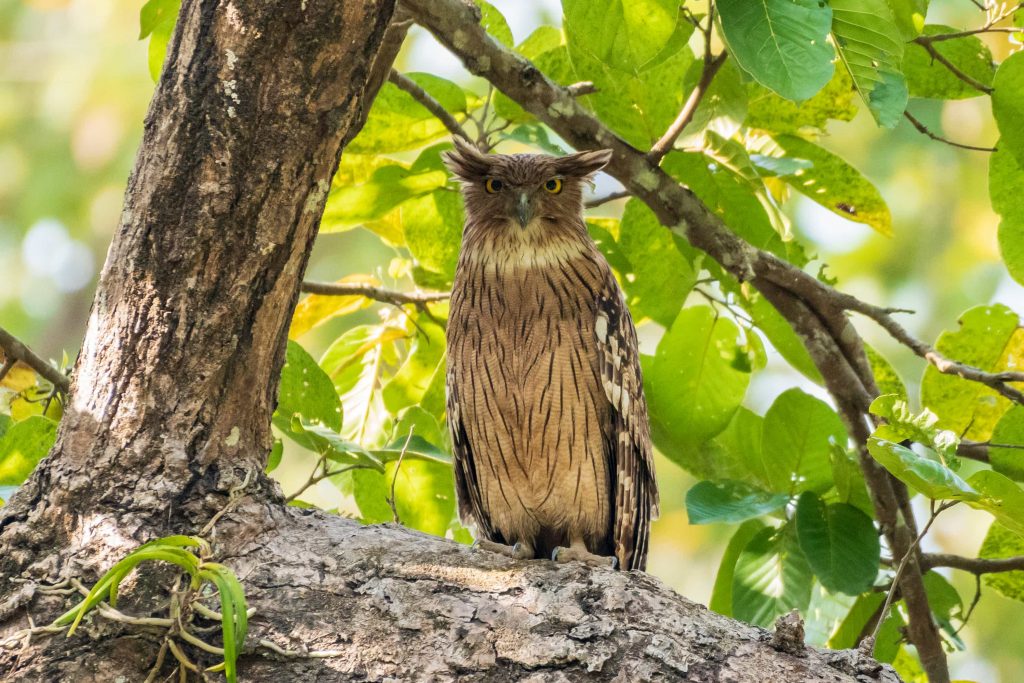Mammals
The Bardia National Park is home to at least 53 mammals including rhinoceros, wild elephant, Bengal tiger, swamp deer, and Gangetic dolphin.
Rhinoceros: Translocation of rhinos from Chitwan to Bardia National Park commenced in 1986, with 58 individuals relocated until 2000. From 1994 to 2000, hunters have been unsuccessful at poaching rhinos. In April 2000, there were 67 rhinos in the park, most of them resident in the Babai Valley. In May 2006, a reconnaissance survey was carried out in the Babai River floodplain, which revealed an alarming decline in the rhino population. Poaching was suspected to be the main cause of this decline. Subsequent surveys in 2007 and 2008 have confirmed the complete disappearance of rhinos from Babai Valley. In different habitats of the Karnali floodplain 25 rhinos were recorded based on direct observation and indirect signs of rhino dung and tracks. They were mostly congregated in the floodplain grassland, riverine forest and wetlands. In March 2008, only 22 rhinos were counted, and two of them were poached after the count. The World Wide Fund for Nature reported that by 2015, the rhino population had risen to 29, mainly because of increased security measures.
Elephants: In 1985, two large elephant bulls were spotted for the first time in the park, named Raja Gaj and Kanchha. They roamed the park area together and made occasional visits to the females. Raja Gaj stood 11.3 ft (3.4 m) tall at the shoulder and had a massive body weight. His appearance has been compared to that of a mammoth due to his high bi-domed shaped head. His forehead and domes were more prominent than in other Asian bull elephants. In 1993, five elephants were seen entering the park, and one year later another 16 individuals arrived. A population count in summer 1997 revealed 41 resident individuals. In 2002, more than 60 individuals were estimated to reside in the Karnali floodplain and the Babai Valley.





